Notes: After Lauder station opened, the NBR made it known that they were not happy with the standard of the contractor’s work or with the facilities that had been provided at Lauder. On 15 July 1901 the NBR goods manager informed the Lauder company that he was generally dissatisfied with the facilities for dealing with livestock on the branch and said that the loading bank at Lauder was unsuitable. He also pointed out that there was a considerable traffic in livestock from Lauderdale to Newcastle, and that the rates for conveying that traffic would require careful adjustment
The NBR complained about the lighting, suggesting that the station and approach road should be lit by gas (rather than oil) lamps. The approach road was about 200 yd long, and members of the public were having difficulty finding their way along it in hours of darkness. The Lauder Gas Light Company offered to install suitable lighting, but the offer was turned down, and no improvements were made. Complaints about the lighting continued; in 1903 a local solicitor wrote to the NBR stating that the lack of lighting was ‘a disgrace’. The company agreed that the complaint was justified, but they were still reluctant to install gas lighting because of the high cost.
There were also numerous complaints from passengers about the lack of public conveniences and seats on the platform. Eventually the Lauder company grudgingly agreed to pay for two seats.
Lauder station had a single platform built of cinders and timber with a run-round loop on the down side of the line. There was a small timber building with a pitched roof that housed the booking office and a small waiting room. A small goods yard comprising two sidings was entered from the loop. One siding served a large cattle dock while the other served a timber goods shed clad with corrugated iron sheeting and a curved sheeted roof. A canopy protruded over the track. A one-road engine shed for the branch locomotive was opened with the line, situated between the sidings and the loop at the north end of the cattle dock, with a locomen’s bothy behind it. A water tank on a timber tower stood on the down side of the line to the north of the station.
There was no signal box: all the points were controlled by single-lever ground frames, with a two lever ground frame at the back of the platform controlling signals.
After passenger services were withdrawn in 1932 the engine shed was closed and quickly demolished, and the signals were removed. During WW2 a buffer food depot consisting of two three-bay sheds was built. It had a storage capacity of 6,000 tons of staple foodstuffs, away from the threat of bombing. There was a trailing siding into the depot from the main line just north of the platform. The depot continued to function after the war as it was still considered strategically important during the early years of the ‘cold war’.
By the 1950s there had been some alterations to the station. Both sidings had been lengthened, and the platform had been shortened by removing its edging and surface timber; a new ramp was built at the new north end. There was now a single-lever ground frame at either end of the loop and a two-lever ground frame at the points in the yard.
Passenger numbers peaked at 8,166 in 1919 after which there was a gradual decline, with only 939 passengers in 1932; that is only seven more than Oxton, which was only a small village. Passenger numbers are listed for the two years after closure (225 in 1933 and 159 in 1934) indicating that special excursions continued to run into the station. Goods traffic stood at 3,720 tons in 1903, steadily increasing to a peak of 18,768 tons in 1924 but dropping back to 4,339 tons in 1930: after that date, recorded tonnage was combined with Oxton. There was regular livestock traffic, but Lauder handled less than half that of Oxton’s quantity. Traffic in sheep peaked in 1922 with 11,007 head handled at the station. The two principal customers for coal were the Lauder gas works and Thirlestane Castle, with around 26 ten-ton wagons every month. The principal traffic to the food depot was flour, which was brought in by rail and distributed by lorry, but this had dwindled to nothing by the late 1950s as all produce arrived and left by road.
BRIEF HISORY OF THE LAUDER LIGHT RAILWAY
By the middle of the 19th century, the population of Lauder was just over two thousand and, like many other rural communities in Scotland, this number was slowly in decline. There were no industries in the area apart from agriculture, with a small amount of trade with the surrounding districts. Good trout fishing in the Leader Water, a tributary of the River Tweed, brought regular visitors to the town.
Lauder had good road access to Edinburgh and Newcastle but, by the mid 19th century, the age of the stagecoach was almost at an end. By 1845 two major railway schemes had been authorised, one being the new main line from Edinburgh to Berwick and, more useful for the people of Lauder, the Edinburgh & Hawick Railway.
The North British Railway made an approach to buy the existing Edinburgh & Dalkeith Railway, which would be incorporated into a proposed new route between Edinburgh and Hawick; this received parliamentary authorisation in 1845, and the sale was completed in October 1845. Construction of the extension to Hawick was rapid, opening in stages as the line forged its way south. Gorebridge opened on 14 July 1847 and by 20 February 1849 it had reached Galashiels, finally arriving at Hawick, where a terminus was opened on 1 November 1849.
Stow station opened on the Hawick line on 1 November 1848 serving local woollen and agricultural industries. The station also acted as a railhead for Lauder which was five miles east of the village, and a stagecoach service was established to connect with the trains at Stow.
The people of Lauder were keen to have their own station, and there were a number of schemes to bring railways through the town. One of these was for a new network of ‘Border lines’ to be worked by the Caledonian Railway. These consisted of a main line from Berwick to Lockerbie, via Hawick and Galashiels, and a secondary line from Edinburgh to Pencaitland, Humbie, Lauder, Kelso and Mindrum, with a branch from Lauder to Galashiels. Nothing came of the scheme, and it seemed that the town had lost its chance of getting its own station had it not been for the advent of the Light Railways Act in 1896.
 |
Before the Act, each new railway line built in the country required a specific Act of Parliament to be obtained by the company that wished to construct it, which greatly added to the cost and time it took to open new railways. The economic downturn of the 1880s had hit agriculture and rural communities in the UK especially hard, and the government wanted to promote the construction of railways in rural areas, especially to facilitate the transport of goods. The 1896 Act defined a class of railway which did |
not require specific legislation to construct: companies could simply plan a line under the auspices of the new Act and, having obtained a Light Railway Order, build and operate it.
By reducing the legal costs and allowing new railways to be built quickly, the government hoped to encourage companies to build the new ‘light railways’ in areas of low population and industry that were previously of little interest to them.
The Act limited weights to a maximum of 12 tons on each axle, and speeds to a maximum of 25 miles per hour. These limits allowed the use of lightly-laid track and relatively modest bridges in order to keep costs down. The Act also exempted Light Railways from some of the requirements of a normal railway: level crossings did not have to be protected by gates, but only by cattle grids, saving the cost both of the gates and a keeper to operate them. Many of the railways built under the authority of the Act were very basic, with little or no signalling.
It was ironically a proposal for a road that led to the successful promotion of a railway to Lauder. In December 1895, prior to the Light Railways Act, a public meeting was held in Oxton to hear the results of a petition to Berwickshire County Council for the building of a new road between Oxton and Fountainhall. The County Council felt there was insufficient local support for a road. The meeting was then told about the Light Railways Bill that was soon to be put before Parliament, and a committee was appointed to consider an application for a light railway to Oxton and Lauder. This proposal was later put to Berwickshire County Council.
A number of resolutions were passed by the council to pave the way for a standard-gauge line to be built which, they considered, would be of great benefit to the Lauderdale District. They added, however, that state aid and local enterprise would be essential to the building of a light railway. The proposal received enthusiastic local support, but even at that early date the value of the line was questioned, and a subsequent article in the Berwickshire Advertiser entitled ‘Horseless Carriages versus Light Railways’ concluded that the motor car might be a suitable alternative to the light railway in the country districts of Berwickshire.
With the passing of the Light Railway Act in 1896 the mechanism was set up which would enable Lauder to receive its railway, and a formal notice was sent to landowners along the route. The promoters of the ‘Lauder Light Railway’ were both major local landowners: William Montagu Hay, Tenth Marquis of Tweeddale (who was also Chairman of the North British Railway) and Frederick Henry Maitland, Thirteenth Earl of Lauderdale.
The cost of building the line was estimated at £48,308. The NBR agreed to subscribe £15,000 and agreed to work the line provided the County Council and the Burgh of Lauder subscribed another £15,000. Estimates were, however, generally exceeded, and the company also had powers to borrow a further £15,000. There were proposals to extend the line to Greenlaw, Gordon or Earlston, but the promoters insisted that the line should not proceed beyond Lauder. There were also suggestions that the line would be more profitable starting at Dalkeith rather than Fountainhall, but nothing came of either of the more ambitious proposals, and a draft Light Railway Order was prepared for the original route.
A public meeting was held to hear objections and, after some delay, the Light Railway Order was made on 30 June1898, authorising the construction of a Light Railway between Fountainhall station and Lauder. The Order provided for the setting up of an incorporated body known as the Lauder Light Railway Company, authorised to build a standard-gauge line ‘10 miles 1 furlong or thereabouts in length’ along the agreed route. The order stipulated that the line must be completed within five years
The new company was formed on 5 June 1899, and terms were agreed with the NBR for operating the line in return for 40% of the gross receipts. Dick Kerr and Co. of Kilmarnock were employed to build the line, while Blyth & Westland of Edinburgh were appointed as the consulting civil engineers. In May 1899 the company’s solicitor was instructed to serve notices for the compulsory purchase of land required for the railway; it was expected to be open for traffic within twelve months.
The first sod was cut with a solid silver spade at the site of Lauder station on 3 June 1899 by Ada, Countess of Lauderdale. There was a festival atmosphere in the town, the weather was fine and the event was well attended.
Construction got underway rapidly, and by the end of the year the engineers were able to report that good progress had been made with cuttings and embankments, and that almost half of the line had been completed. All of the permanent way had been delivered to Fountainhall station, and track-laying was expected to start shortly. The weather, however, had not been kind, and in February 1900 parts of the trackbed near Oxton were threatened by flooding after a prolonged period of continuous rain. During this time a dispute broke out with the NBR over the distance between sleepers, and an insistence by the NBR that passenger shelters must be provided at stations. The NBR also stated that passenger facilities at Oxton and Lauder were inadequate, and the platforms should be longer. The company agreed to make changes, and the dispute was settled.
With continued bad weather the expected completion date was not met, and by June 1900 only two-thirds of the cuttings and embankments had been completed. The delay was blamed on a shortage of materials and manpower, with less than half the expected workforce employed owing to the contractor’s inability to find sufficient labourers. By December 1900 cuttings and embankments were almost complete. If the weather remained good, it was hoped that the line would be completed in a further three months; but again the deadline passed.
The line was eventually ready for inspection by the Board of Trade on 28 June 1901. It was found to be in good order, and it was announced that the Lauder Light Railway would open to all traffic on 2 July.
The line began at Fountainhall station at 700 ft above sea level, climbing to 944 ft near Eastertown, and descending to 600 ft at the Lauder terminus. Although Fountainhall and Lauder stations are only six miles apart as the crow flies, by rail the distance was 10½ miles. In order to avoid the obstruction of Collie Law (1,254 ft) and to serve the small village of Oxton, from Fountainhall the railway wound its way generally north-eastwards up the valley of Nethertown Burn to the Eastertown summit. It then followed the Mean Burn valley in a huge semi-circular curve to reach the Leader Water valley near Oxton, 6½ miles by rail from Fountainhall. Thereafter the route was almost direct to Lauder, where the terminus was somewhat inconveniently located at the northernmost edge of the town.
Once again Lauder was in festival mood as the first train pulled out of the station at 6.20 am with 62 passengers on board, and a further 51 joining at Oxton. There were numerous special excursions along the line during the first week, but once the euphoria had died down the railway settled down to four daily return services between Lauder and Fountainhall, where there were onward connections to Galashiels and Edinburgh. The 10-mile journey was completed in 47 minutes. There was no Sunday service.
Despite some disgruntled passengers who complained about inadequate facilities at the stations, especially lighting and toilets, passenger receipts were initially better than expected. After deducting the NBR's 40%, the line still made an income of £383 in its first three months. Goods traffic was equally profitable with 752 tons handled at Lauder and 299 tons at Oxton in September of the first year; 2,046 sheep had been sent from Oxton to main line destinations. A total of 1,300 passengers had been carried on the branch trains that month. This level of traffic held up, and the Lauder Company continued to pay a steady dividend throughout its independent life.
Once again there were proposals to extend the line to join up with the Duns – St Boswells line a mile south of Gordon station. Nothing came of the proposal.
Although most passengers travelled to Edinburgh, the line was unable to attract many commuters. The first train left Lauder at 6.15am, which was too early for commuters to the city, although its return journey from Fountainhall was very convenient for bringing back mail, parcels, perishable goods and newspapers. There was clearly a demand for a later departure, with a connection at Fountainhall that would allow commuters to reach the capital at the start of normal business hours. The second train left Lauder at 9.30am, but the connection did not arrive at Edinburgh until 12.58 pm. Nothing was done to improve the service which remained largely unchanged until WW1.
With the opening of the line there was some new tourist traffic into Lauder. A Temperance Hotel was opened at Lauder shortly before the line did, and the Tower hotel opened in Oxton in 1903. The main attraction was the trout fishing in the River Leader, with cheap day tickets being available. Local guide books also promoted the beauty of Lauderdale, and it soon became a popular holiday destination.
There was one daily pick-up goods train, arriving at Lauder around noon. The principal loads carried were coal, fertilisers and other agricultural requisites inward, and livestock and agricultural produce outwards. The transport of sheep was extremely important to the railway, although the absence of a direct line from Lauder and Oxton to the markets at Newton St Boswells tended to discourage this traffic. A special service was run on Tuesday mornings for livestock in connection with the weekly market held that day at Gorgie in Edinburgh. Both Oxton and Lauder stations had cranes and were capable of handling most types of traffic, and coal depots were established at the stations.
During the 1912 miners’ strike, all passenger services were suspended from Monday 11 March, owing to a shortage of coal, with a reduced service of two trains per day starting on 13 April. Once the strike was over the normal service resumed, but this was to be short-lived as the service was once again cut back to two daily return journeys during WW1 as an economy measure to save coal and manpower. During the war all the railways of Britain came under control of the government’s Railways Operating Department. Many railwaymen had volunteered for active duty despite being in a reserved occupation. Once again a normal service resumed after the war.
Whilst the 130 UK railway companies coped well during the war, there were calls for more consolidation and even for nationalisation. The government reached a compromise, and from 1 January 1923 all the companies were grouped into just four large companies, the ‘Big Four’. Under the ‘grouping’, the North British Railway and the Lauder Light Railway |
 |
became part of the London & North Eastern Railway.
Initially changes under new ownership were limited to a new livery for the locomotives. It was soon clear, however, that the increased popularity of road transport would soon affect the viability of the line. This was not helped by a surplus of army trucks left over from the war, and a large number of ex-servicemen who were able to drive them. Before the war the handful of cars found on the road were owned by the gentry.
In 1924 the first bus service from Edinburgh reached Lauder. It was an instant success, and on 1 August 1927 the rapidly expanding Scottish Motor Traction Company bought the bus and the service. The LNER and the LMS owned a 50% share in the Scottish Motor Traction Co., although they were not permitted to run bus services themselves. During the 1926 General Strike all train service were suspended: goods for two weeks and passengers for four weeks. It was soon clear that buses could easily cope with the increased traffic.
At this time the railway was still profitable. At Oxton and Lauder goods traffic seems to have peaked in the mid-1920s, and livestock remained the predominant traffic. Passenger numbers remained much the same as pre-war although under the LNER there were only three daily trains, with an additional evening train on Saturdays to cater for returning day-trippers. A number of ‘works outings’ also ran during the 1920s bringing visitors to Lauder for the day. These were known as ‘guaranteed excursions’ with the promoter paying a set price for the train, irrespective of the number of passengers carried.
By the late 1920s passenger numbers on the regular timetabled services were very low, often only a handful on each train - sometimes none at all! By 1931 Oxton handled an average of 23 passengers a week, and Lauder’s figures were little better. It was clear that this situation could not continue. It was suggested that the passenger service could be operated by a Sentinel steam railcar, but as the same locomotive handled both goods and passenger services there would have been no saving.
The only option was closure. A memorandum was sent by the LNER’s General Manager to the Traffic, Locomotive and Works Committees. It said, ‘the passenger traffic on the Lauder Light Railway, which has been falling away for a number of years as a result of road competition, has now declined to such an extent that the passenger train service can no longer be justified, and it is not anticipated that it will be possible to recover the traffic to rail ... no case arises for closing the line entirely as the goods traffic continues to be well maintained and it is estimated that about 75 per cent of the parcels traffic could be retained if catered for by goods train … there is no legal objection to the withdrawal of the passenger trains and, as an adequate service of road omnibuses is provided in the district by the Scottish Motor Traction Co. Ltd., it is not anticipated that any serious complaints will arise from the public. It is recommended that authority be given for the passenger train service on the Lauder Light Railway being withdrawn and the line thereafter worked for goods and parcels traffic only’.
chris_hind.gif) |
Authority was duly given, and at the end of August 1932 the local newspapers carried a notice stating that ‘on or after Monday, September 12, passengers will not be conveyed to and from Lauder and Oxton stations on the Fountainhall - Lauder branch railway’. There was little opposition to the closure, and the last passenger train ran on Saturday 10 September 1932 with only a few local people waiting at Lauder to see it off. At least two passenger excursion ran after the closure of the line.
Although goods traffic continued, it too was soon in decline, with much livestock being taken to market by road. WW2 brought a new lease of life to the line when a Ministry of Food ‘buffer depot’ was opened next to Lauder station. The depot had a storage capacity of 6,000 tons of staple foodstuffs away from the threat of bombing. During the war there was a reduced goods service with a Monday, Wednesday and Friday mid-morning working from Galashiels and a Saturday empty van train from Edinburgh. Additional traffic was generated from the Airhouse Quarry between Oxton and Fountainhall, of stone required as hardcore for airfield runways.
The railways came under minimal government control again during the Second World War, and there were renewed calls for nationalisation which was one of the pledges of the Labour Party, who were swept to power in 1945. From 1 January 1948 almost all of the railways in the UK came under full government control as British Railways. Lines north of the border came under the auspices of British Railways, Scottish Region (ScR).
Before any changes could be implemented the weather was to take a hand in the future of the branch. In early August 1948 torrential rain began to fall in Berwickshire and East Lothian, and within a few days rivers and streams had burst their banks causing severe flooding. The flood water caused part of the embankment next to the Gala Water bridge to collapse and undermined the west abutment, making the whole structure unsafe. Once the water subsided, the full extent of the damage could be seen. Branch services were immediately suspended until further notice, and emergency road haulage arrangements to and from Galashiels were put in place.
There seemed to be little economic justification for repairing the bridge. However, following intervention from the Lauder Town Council, the bridge was repaired, and the line reopened on 20 November 1950, with a resumption of the normal goods service. It was later stated by BR that the only reason for repairing the line was because in the early years of the ‘cold war’ the food depot at Lauder was still considered to be strategically important.
The service now consisted of a single daily train on Monday - Friday only, with a livestock train ‘as required’ on Tuesdays. This service was maintained until the line finally closed.
Towards the end of 1956 there were rumours of closure following the decline of traffic to the food depot, and the lack of any industrial development around the line. On farms the introduction of combine harvesters effectively meant that the railway had almost completely ceased to have any real part to play in the local economy.
While BR stated that the future of all branch lines was under review they were clear that no decision had been made to close the Lauder line. This was backed by the fact that an extensive programme of installing new sleepers and fences had just been carried out between Fountainhall and Oxton. Perhaps more ominous was the large number of condemned wagons that began to appear in sidings at both stations.
 |
A review into the viability of the branch was carried out, and in July 1958 a report was submitted to the Transport Users’ Consultative Committee for Scotland. The findings of this report were that a total of only 853 tons of freight and 98 head of
livestock was carried over the line annually, and that the Ministry of Food Depot - the traffic to which had |
been taken over by the Scottish Co-operative Wholesale Society - was now generating no rail traffic whatsoever. All coal was forwarded by road from Galashiels, and all parcels and sundries traffic came from Earlston station by BR lorry, and neither of these would be affected by closure. Middleton siding had received one wagon containing 7 tons of fertiliser in the whole of 1957.
On 22 July 1958 a special meeting of the Lauder Town Council was called to discuss the proposed closure of the line, and the Town Clerk subsequently informed the TUCC that, after the very fullest consideration, ‘my Council have decided that in view of the volume of traffic that would appear to be necessary to make the line pay, they cannot make representations against the proposal . . . while naturally regretting it.’
The last goods train ran over the branch on 30 September 1958, and the following day both stations and Middleton siding were closed to all traffic. There was, however, one final passenger train on 15 November 1958 when the Branch Line Society organised an enthusiasts’ special - one final return trip from Fountainhall to Lauder. At least this train was seen off in style, unlike the last train in 1932.
A few days later, a stores train removed all salvageable items and furniture, and gradually the condemned wagons were removed by rail for scrapping and burning. The track was lifted in the winter of 1960-1. The station site at Lauder was taken over by the Council as a roads depot while Oxton station became a private depot. Parts of the trackbed of the line were converted into farm tracks, but all bridges were left intact and the station buildings themselves survived for many years.A two mile section of trackbed between Middletoun and Threeburnford is now a public footpath.
Ticket from Michael Stewart, route map drawn by Alan Young.
Other web sites: Click here for a series photographs taken along the route of the Lauder Light Railway in 2010.
Sources:
To see other stations on the Lauder Light Railway click on the station name:
Fountainhall & Oxton |

old1.jpg)

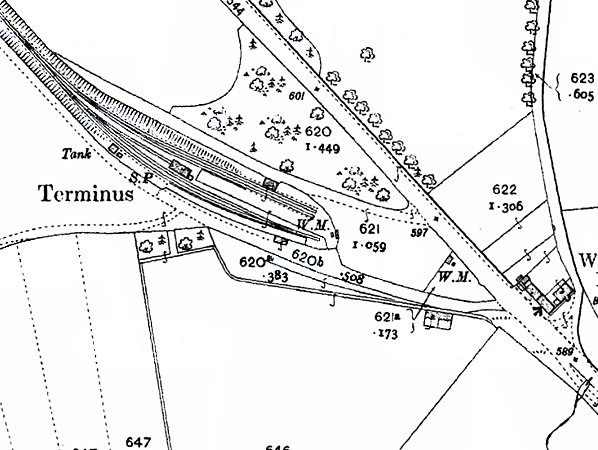 1908 1:2,500 OS map.
1908 1:2,500 OS map.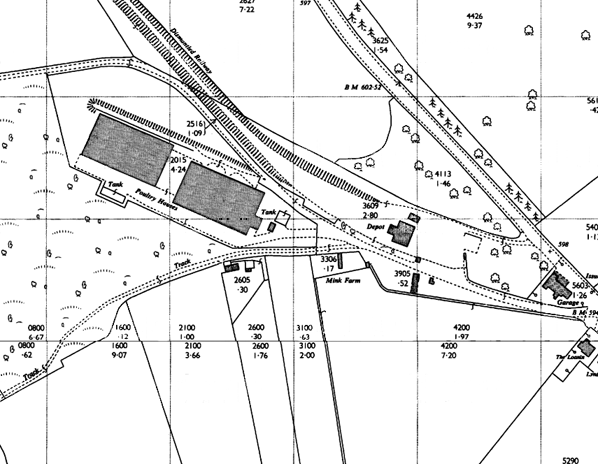 1961 1:2,500 OS map. Although the track had been lifted by this date the course of the siding serving the Ministry of Food depot can clearly be seen.
1961 1:2,500 OS map. Although the track had been lifted by this date the course of the siding serving the Ministry of Food depot can clearly be seen.old4.jpg)
old6.jpg)
old2.jpg)
old9.jpg)
old8.jpg)
old5.jpg)
old7.jpg)
old1.jpg)

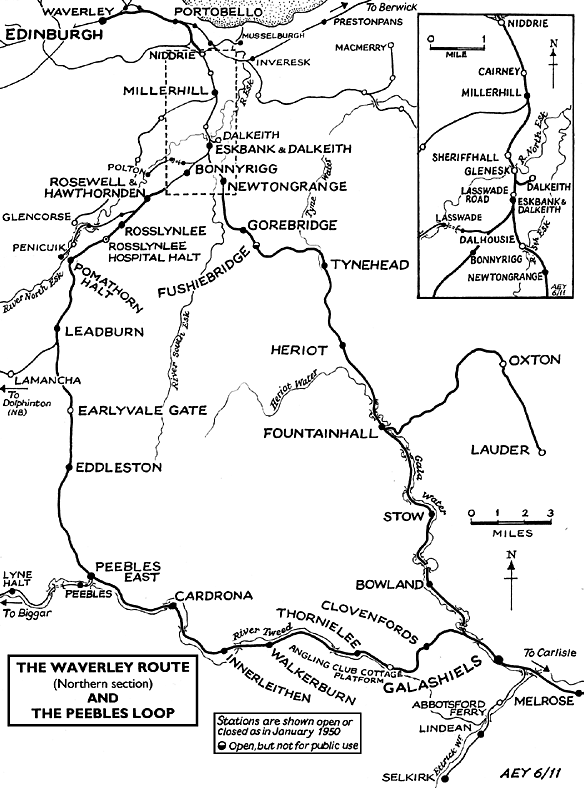

chris_hind.gif)

old3.jpg)
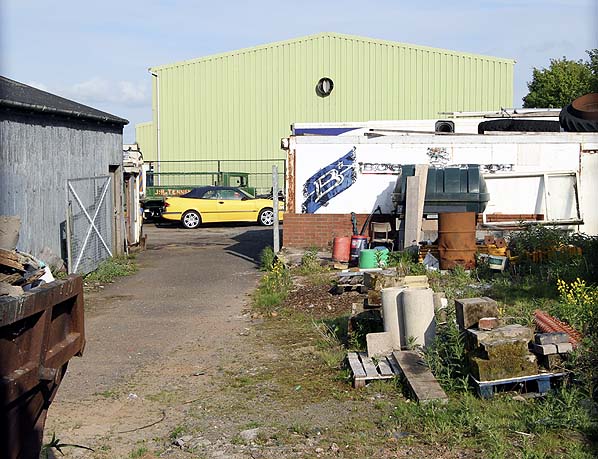
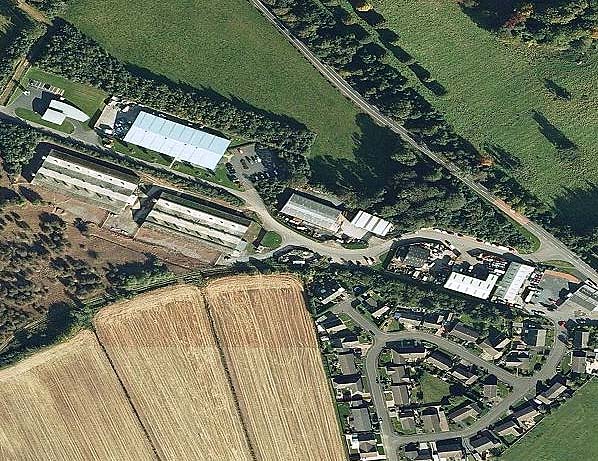
thumb6.jpg)



 Home Page
Home Page